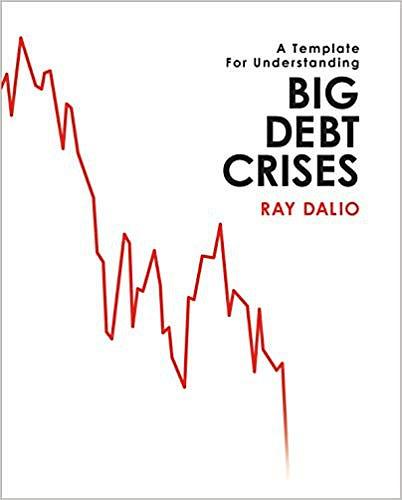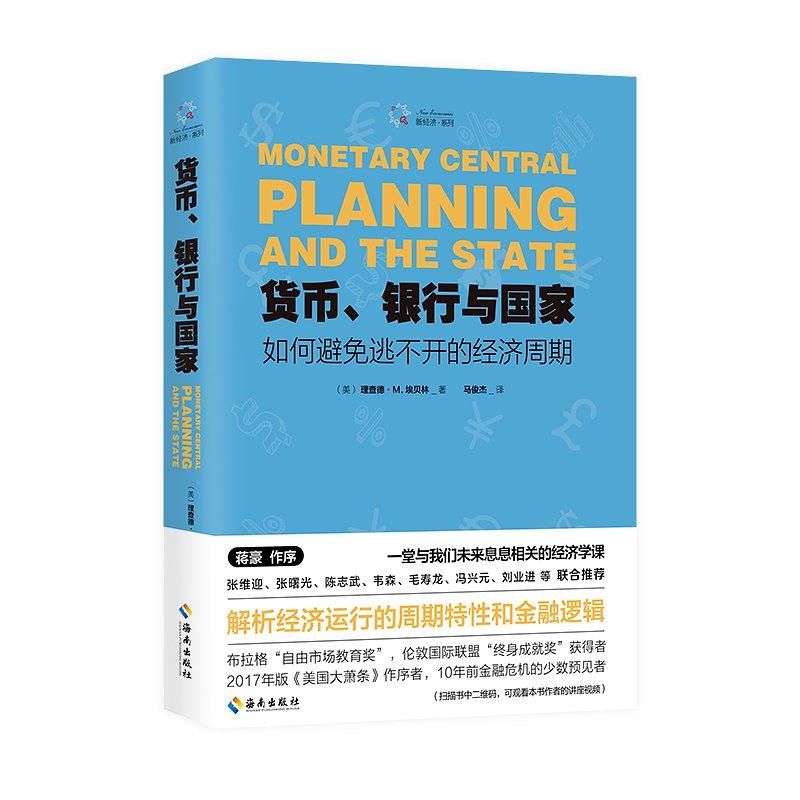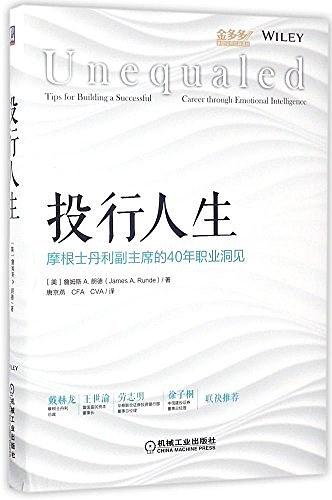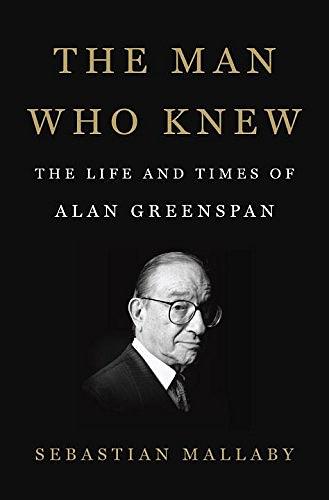-

Big Debt Crises
"Ray Dalio's excellent study provides an innovative way of thinking about debt crises and the policy response." - Ben Bernanke
"Ray Dalio's book is must reading for anyone who aspires to prevent or manage through the next financial crisis." - Larry Summers
"A terrific piece of work from one of the world's top investors who has devoted his life to understanding markets and demonstrated that understanding by navigating the 2008 financial crisis well." - Hank Paulson
"An outstanding history of financial crises, including the devastating crisis of 2008, with a very valuable framework for understanding why the engine of the financial system occasionally breaks down, and what types of policy actions by central banks and governments are necessary to resolve systemic financial crises. This should serve as a play book for future policy makers, with practical guidance about what to do and what not to do." - Tim Geithner
On the 10th anniversary of the 2008 financial crisis, one of the world's most successful investors, Ray Dalio, shares his unique template for how debt crises work and principles for dealing with them well. This template allowed his firm, Bridgewater Associates, to anticipate events and navigate them well while others struggled badly.
As he explained in his #1 New York Times Bestseller, Principles: Life & Work, Dalio believes that most everything happens over and over again through time so that by studying their patterns one can understand the cause-effect relationships behind them and develop principles for dealing with them well. In this 3-part research series, he does that for big debt crises and shares his template in the hopes reducing the chances of big debt crises happening and helping them be better managed in the future.
The template comes in three parts provided in three books: 1) The Archetypal Big Debt Cycle (which explains the template), 2) 3 Detailed Cases (which examines in depth the 2008 financial crisis, the 1930's Great Depression, and the 1920's inflationary depression of Germany's Weimar Republic), and 3) Compendium of 48 Cases (which is a compendium of charts and brief descriptions of the worst debt crises of the last 100 years). Whether you're an investor, a policy maker, or are simply interested, the unconventional perspective of one of the few people who navigated the crises successfully, A Template for Understanding Big Debt Crises will help you understand the economy and markets in revealing new ways.
-

货币、银行与国家
-

混改
推进混合所有制改革,是深化国企改革的重要突破口。国有资本做强做优做大,国有企业提升持久竞争力,归根结底要靠改革。改革牵一发而动全身,从哪里入手?国企效率偏低、负债率偏高的问题如何解决?国资股东如何通过管资本实现不缺位、不错位?国资国企改革是一项复杂的系统工程,如果缺乏创新的思路、周密的策划、稳妥的实施,将很难取得理想的效果,甚至可能留下改革后遗症。在此背景下,本书以问题为导向,从资本视角出发,结合国资国企的发展现状和外部资本的改革期许,集中探讨了国企为何要混改,混改应该怎么改的问题:
方向篇
从资本层面切入,通过对国企改革发展的历程回顾和现状分析,剖析国资国企面临的瓶颈问题,以及可能的解决路径,从而理解为什么说混合所有制改革是国企改革的重要突破口,并立足国有经济全局提出了对混改方向的理解。
思路篇
结合过去3年来的实践和调研,对混改中国企可能面临的混改路径选择、混改的重点难点等问题,通过上百个案例分析,归纳出一个完整的框架性分析思路“混改十步法”,探讨混改应该怎么改,并总结了混合所有制企业六特征——主业突出、股东到位、骨干绑定、治理科学、机制高效、战略领先。
案例篇
选择了三个颇具代表性的混改案例进行了详细分析。在坚持“因地制宜、一企一策”的基础上,总结了具有共性的混改成功三要素——企业家精神、国企的资源禀赋优势和外部资本的市场化优势,以及混改的一个关键词——资本的积极流动。
-

陆蓉行为金融学讲义
每次买了某只股票之后,它就开始跌,卖了却又开始涨?
自从入手了股票,就每天盯着大盘和个股看?
明明把钱放在了几个篮子里,结果还是没有赚?
……
如果你的投资也存在这类问题,那么,你需要了解一门学科:行为金融学。因为要在股市盈利,不只需要金融学,更需要心理学。
行为金融学结合了经济学、金融学,以及心理学对人行为的分析,指导人们在真实的金融市场做出正确决策。它能够解决让大多数投资者甚至机构都感到困惑的问题,比如投资者在市场中怎么避免犯错,成功的投资机构是怎样利用群体错误赚钱的……这就是近年来行为金融学在华尔街和其他金融市场都备受追捧,甚至连诺贝尔经济学奖都青睐有加、数次颁发给这门学科的原因。
本书兼具知识性、趣味性和可读性,用大量的案例深入浅出地讲解行为金融学如何有效指导投资实战,让投资者战胜市场,获得傲人战绩。
-

投行人生
《投行人生》源于摩根士丹利(Morgan Stanley)分析师詹姆斯 A.朗德在IBM、普林斯顿大学等地所做演讲的内容精华。他曾在摩根士丹利效力超过40年,是美国在同一家投资银行效力时间zui长的投行家。詹姆斯每年会做大约50场演讲,内容着重于投行人士情商和软技能的提升,在众多高校和华尔街金融圈引发了长久的共鸣。在摩根士丹利工作期间,他作为投行家的生涯已经成为一代传奇。他出身于教师家庭,承袭了父母的教导和指导他人的人生艺术。读者在本书中能够找到很多实操技巧和工具,有助于在职场的各个阶段提升业绩。
-

The Man Who Knew
Sebastian Mallaby's magisterial biography of Alan Greenspan, the product of over five years of research based on untrammeled access to his subject and his closest professional and personal intimates, brings into vivid focus the mysterious point where the government and the economy meet. To understand Greenspan's story is to see the economic and political landscape of the last 30 years--and the presidency from Reagan to George W. Bush--in a whole new light. As the most influential economic statesman of his age, Greenspan spent a lifetime grappling with a momentous shift: the transformation of finance from the fixed and regulated system of the post-war era to the free-for-all of the past quarter century. The story of Greenspan is also the story of the making of modern finance, for good and for ill.
Greenspan's life is a quintessential American success story: raised by a single mother in the Jewish émigré community of Washington Heights, he was a math prodigy who found a niche as a stats-crunching consultant. A master at explaining the economic weather to captains of industry, he translated that skill into advising Richard Nixon in his 1968 campaign. This led to a perch on the White House Council of Economic Advisers, and then to a dazzling array of business and government roles, from which the path to the Fed was relatively clear. A fire-breathing libertarian and disciple of Ayn Rand in his youth who once called the Fed's creation a historic mistake, Mallaby shows how Greenspan reinvented himself as a pragmatist once in power. In his analysis, and in his core mission of keeping inflation in check, he was a maestro indeed, and hailed as such. At his retirement in 2006, he was lauded as the age's necessary man, the veritable God in the machine, the global economy's avatar. His memoirs sold for record sums to publishers around the world.
But then came 2008. Mallaby's story lands with both feet on the great crash which did so much to damage Alan Greenspan's reputation. Mallaby argues that the conventional wisdom is off base: Greenspan wasn't a naïve ideologue who believed greater regulation was unnecessary. He had pressed for greater regulation of some key areas of finance over the years, and had gotten nowhere. To argue that he didn't know the risks in irrational markets is to miss the point. He knew more than almost anyone; the question is why he didn't act, and whether anyone else could or would have. A close reading of Greenspan's life provides fascinating answers to these questions, answers whose lessons we would do well to heed. Because perhaps Mallaby's greatest lesson is that economic statesmanship, like political statesmanship, is the art of the possible. The Man Who Knew is a searching reckoning with what exactly comprised the art, and the possible, in the career of Alan Greenspan.